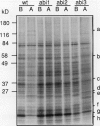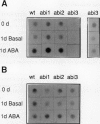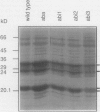Abstract
Wild type and three abscisic acid (ABA)-insensitive mutants of Arabidopsis (ABI1, ABI2, and ABI3) were compared for their ability to respond to ABA for a variety of ABA-inducible responses throughout the life cycle of the plants. The responses tested included effects on seedling growth, proline accumulation in seedlings, ABA-regulated protein synthesis in plantlets, and seed storage protein and lipid synthesis and accumulation. The abi1 and abi2 mutants showed reduced sensitivity to ABA for inhibition of seedling growth, induction of proline accumulation, and alterations in protein synthesis patterns during vegetative growth, but had wild type levels of storage reserves. In contrast, the abi3 mutant had wild type sensitivity for induction of proline accumulation and was only slightly less responsive to ABA with respect to effects on seedling growth and changes in patterns of protein synthesis. The major effects of this mutation were on seed development. Seeds of the abi3 mutant had two-thirds of the wild type level of storage protein and one-third the wild type level of eicosenoic acid, the major fatty acid component of storage lipids in wild type seeds. These results show that none of the abi mutants is insensitive for all ABA-inducible responses and that the abi3 effects are not seed-specific. Comparison of the degree of ABA sensitivity of monogenic mutant lines with that of digenic mutant lines carrying pairwise combinations of the abi mutations suggests that ABA responses in mature seeds are controlled by at least two parallel pathways.
Full text
PDF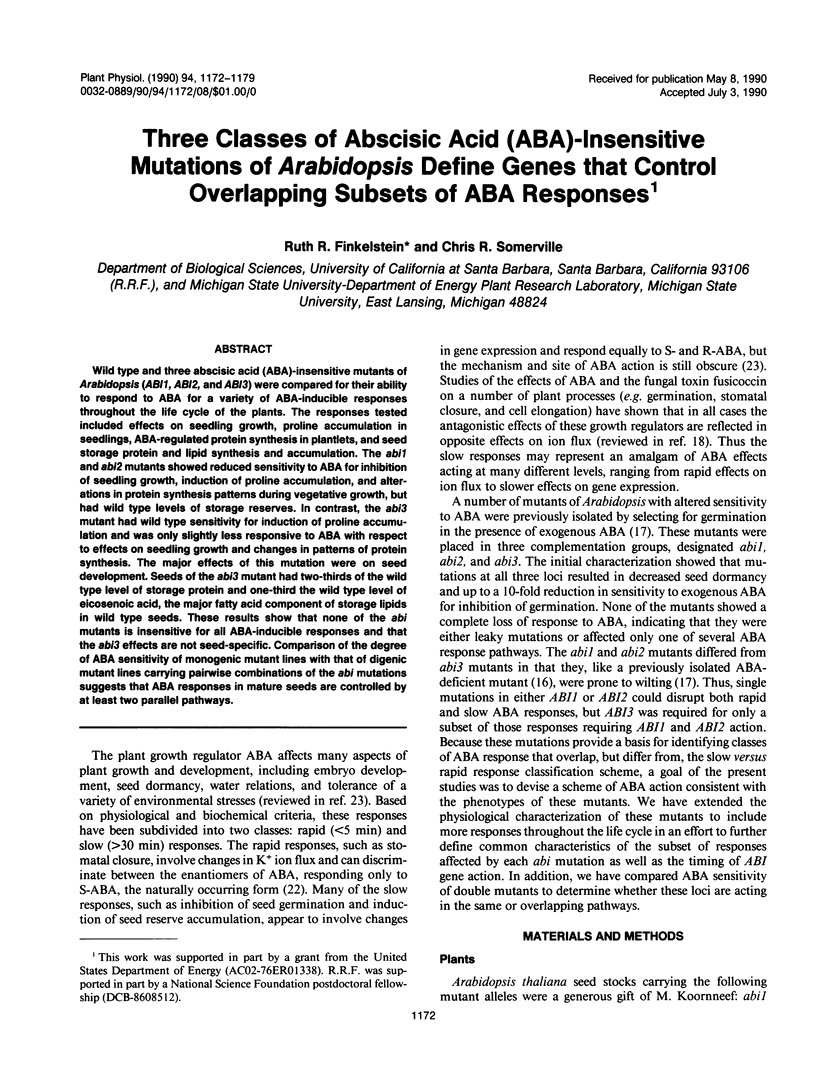
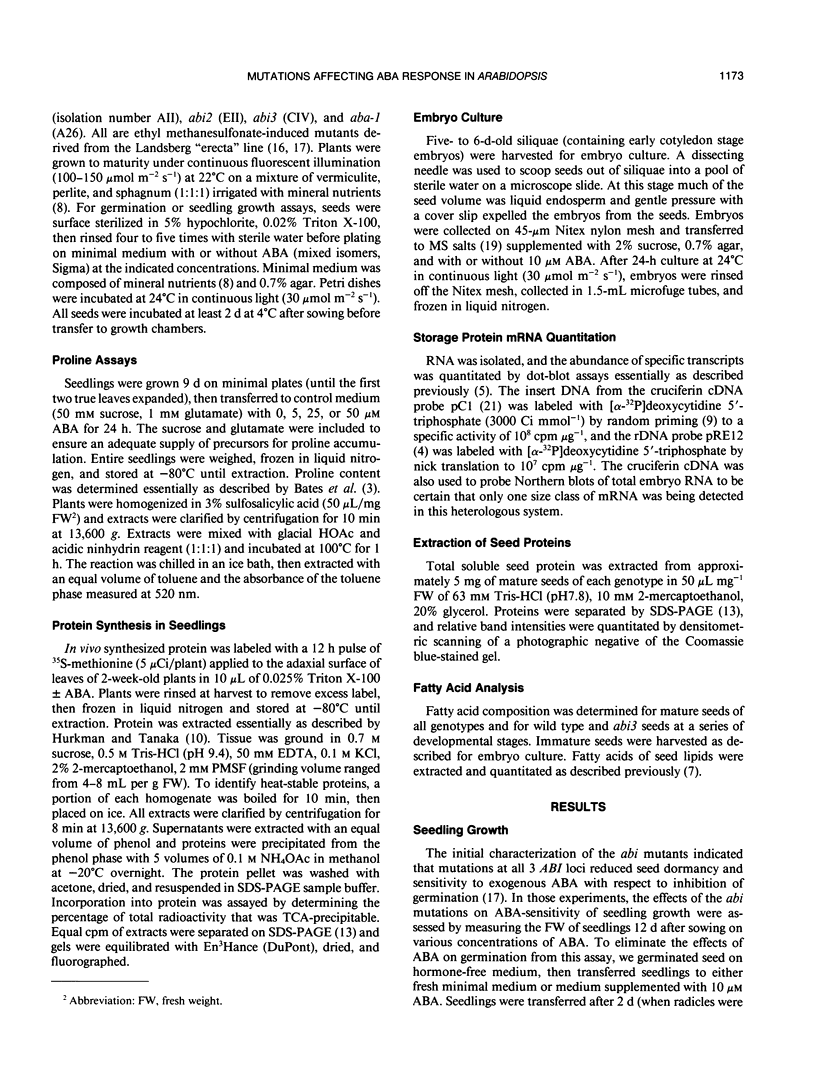
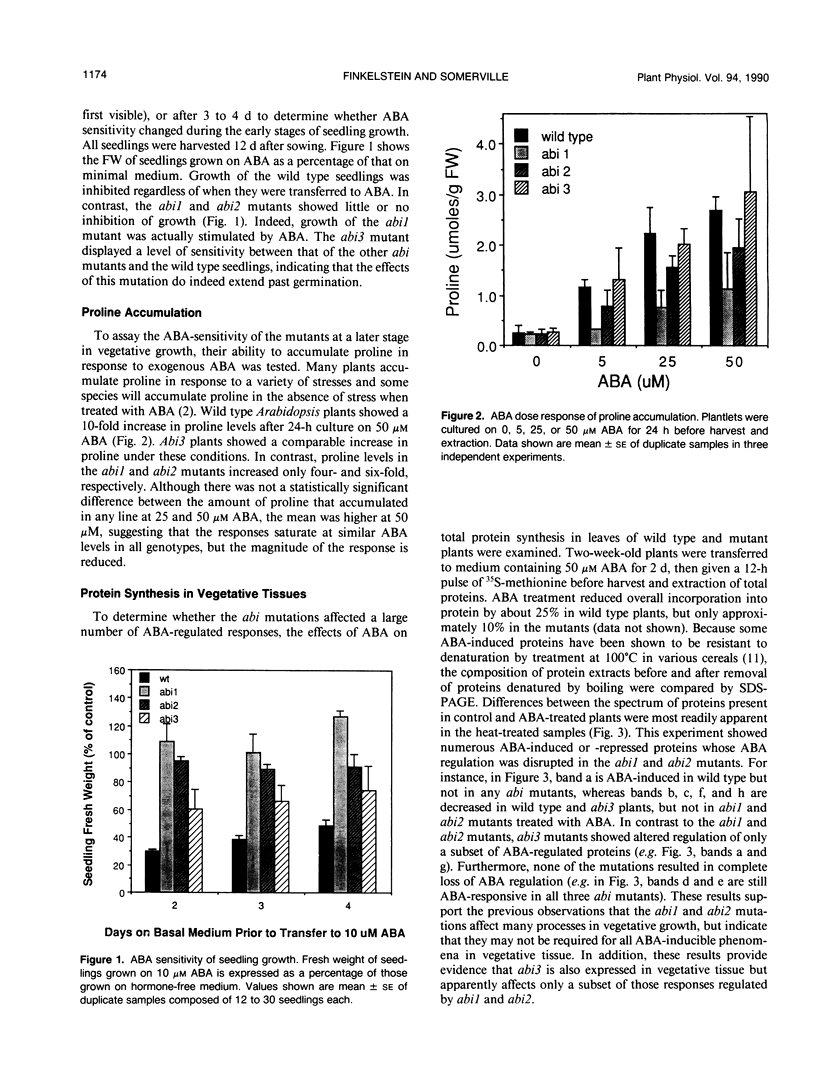
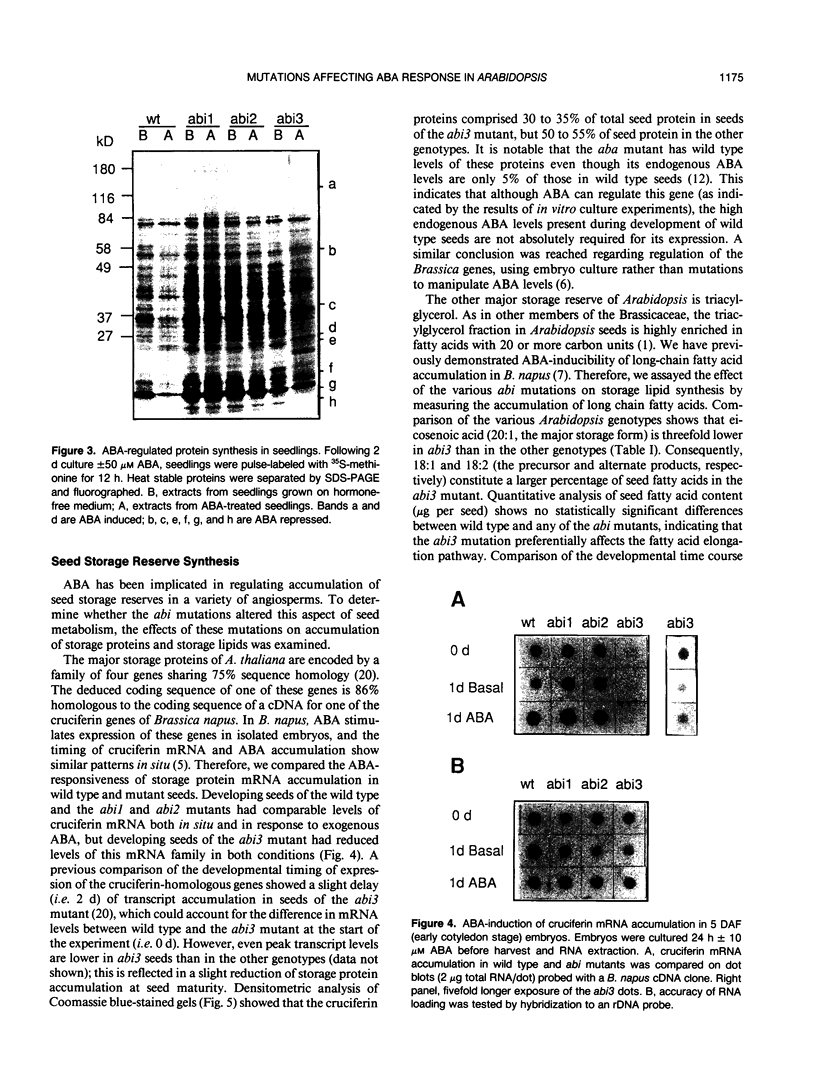
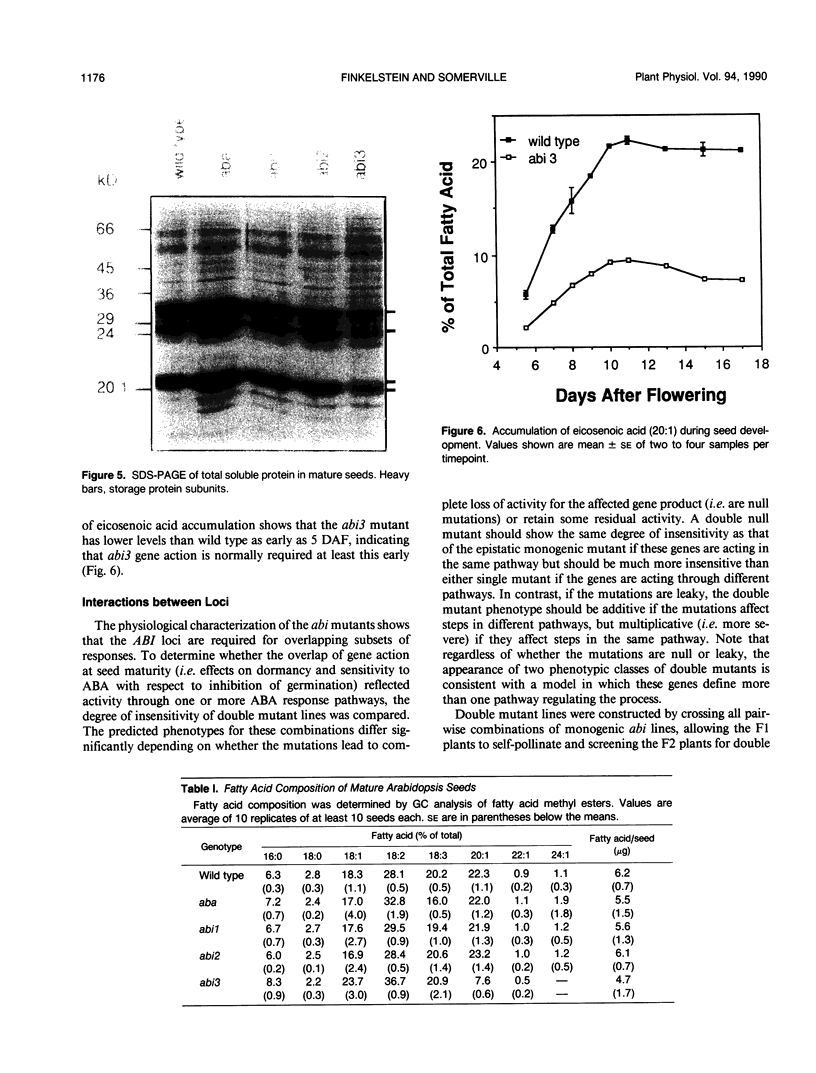
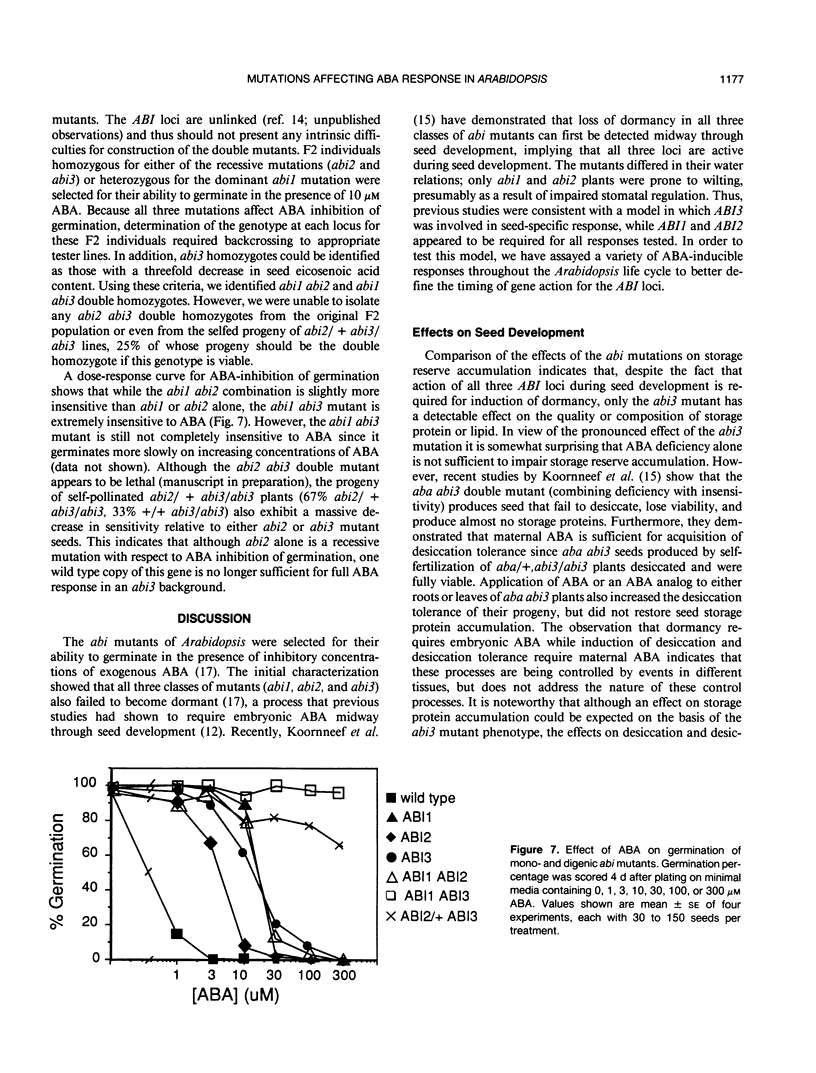
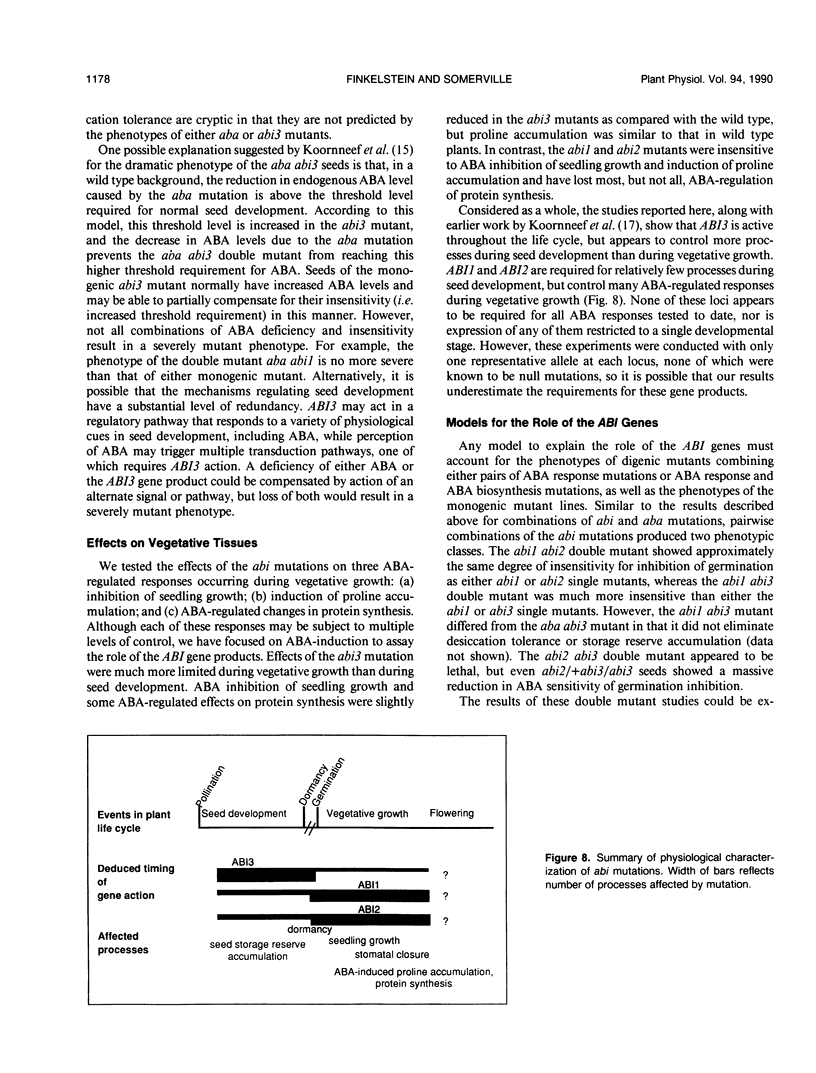
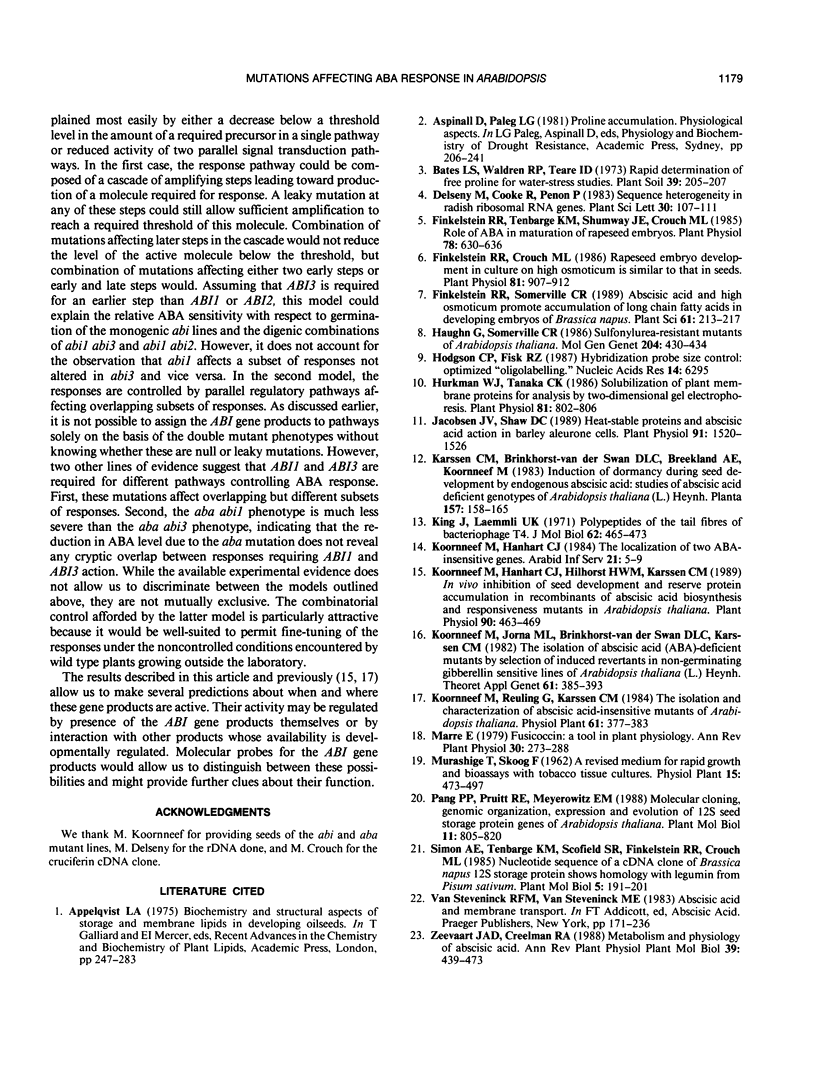
Images in this article
Selected References
These references are in PubMed. This may not be the complete list of references from this article.
- Finkelstein R. R., Crouch M. L. Rapeseed embryo development in culture on high osmoticum is similar to that in seeds. Plant Physiol. 1986 Jul;81(3):907–912. doi: 10.1104/pp.81.3.907. [DOI] [PMC free article] [PubMed] [Google Scholar]
- Finkelstein R. R., Tenbarge K. M., Shumway J. E., Crouch M. L. Role of ABA in Maturation of Rapeseed Embryos. Plant Physiol. 1985 Jul;78(3):630–636. doi: 10.1104/pp.78.3.630. [DOI] [PMC free article] [PubMed] [Google Scholar]
- Hodgson C. P., Fisk R. Z. Hybridization probe size control: optimized 'oligolabelling'. Nucleic Acids Res. 1987 Aug 11;15(15):6295–6295. doi: 10.1093/nar/15.15.6295. [DOI] [PMC free article] [PubMed] [Google Scholar]
- Hurkman W. J., Tanaka C. K. Solubilization of plant membrane proteins for analysis by two-dimensional gel electrophoresis. Plant Physiol. 1986 Jul;81(3):802–806. doi: 10.1104/pp.81.3.802. [DOI] [PMC free article] [PubMed] [Google Scholar]
- Jacobsen J. V., Shaw D. C. Heat-stable proteins and abscisic Acid action in barley aleurone cells. Plant Physiol. 1989 Dec;91(4):1520–1526. doi: 10.1104/pp.91.4.1520. [DOI] [PMC free article] [PubMed] [Google Scholar]
- King J., Laemmli U. K. Polypeptides of the tail fibres of bacteriophage T4. J Mol Biol. 1971 Dec 28;62(3):465–477. doi: 10.1016/0022-2836(71)90148-3. [DOI] [PubMed] [Google Scholar]
- Koornneef M., Hanhart C. J., Hilhorst H. W., Karssen C. M. In Vivo Inhibition of Seed Development and Reserve Protein Accumulation in Recombinants of Abscisic Acid Biosynthesis and Responsiveness Mutants in Arabidopsis thaliana. Plant Physiol. 1989 Jun;90(2):463–469. doi: 10.1104/pp.90.2.463. [DOI] [PMC free article] [PubMed] [Google Scholar]



